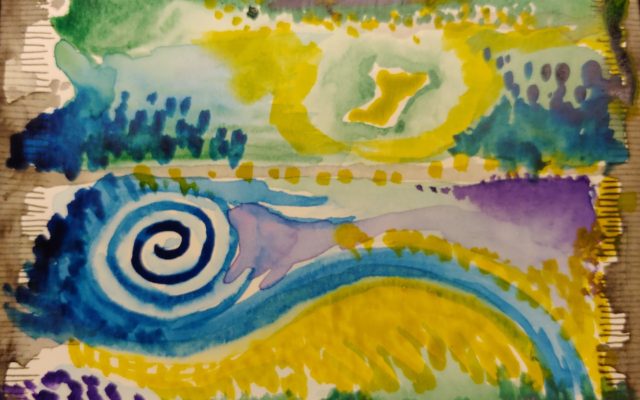“ART CAN PERMEATE THE VERY DEEPEST PART OF US, WHERE NO WORDS EXIST.” – EILEEN MILLER
Not Just Making Beautiful Art
An individual might wonder, “Why art therapy? I’m not an artist – I can’t draw, so how can this help me?” Good question! By using the creative process in therapy with a licensed and experienced art therapist, we can begin to explore your internal world from the outside in a safe and supportive environment. In art therapy, you do not just draw to make “beautiful” art – although you might. Rather, we delve deeper and begin to visually depict our internal experiences. This can allow you to gain greater self-awareness, self-understanding, self-acceptance and growth while allowing for cognitive distance, as potentially upsetting or threatening material is externalized and contained in an image.
The Benefit of Visualizing Emotions
While it may initially feel uncomfortable, art expression can help individuals focus on identifying and validating emotional responses and can facilitate connection between the mind and body. Visualizing emotions, and often conflicting emotions held by parts of ourselves, can deepen the relationship with and allow for integration of these parts.
Additionally, art therapy can offer increased self-efficacy through experimentation with alternative creative responses to and understanding of difficult emotions and the impulse of our protective parts to self-regulate through what can sometimes be self-harmful behaviors. In other words, the emotional regulation and behavioral change individuals often seek when entering therapy can be facilitated by art therapy given it allows for creative experimentation, increased insight, and self-compassion.
Processing Trauma
Many individuals are referred to or seek art therapy specifically to assist them in processing trauma. This is because research has shown that traumatic memories are stored in the part of the brain that art making can directly assess. This means art therapy can be of particular benefit because creating art can
- assist with recall, processing and resolving previously inaccessible traumatic memories;
- engage both hemispheres of the brain and allow for integration of non-verbal and narrative memory;
- provide a safe degree of distancing between the individual and the traumatic content being communicated via the image, which can allow these memories to be experienced as less overwhelming;
- allow for engagement with the uncomfortable material useful in facilitating healing particularly with pervasive, ongoing, and complex trauma.
Why Work with an Art Therapist?
Art therapy is different from creating art on your own, which can be therapeutic and healing, or creating art in therapy with another type of clinician, which can also be beneficial. Often, traditional verbal therapy is not enough or isn’t working at all. Expressing your thoughts and emotions through words alone can be difficult. Art therapy can provide you with the opportunity to explore your internal world from the outside in a safe and supportive environment.
According to the American Art Therapy Association (AATA):
Art therapy is an integrative mental health and human services profession that enriches the lives of individuals, families, and communities through active art-making, creative process, applied psychological theory, and human experience within a psychotherapeutic relationship.
Art therapy, facilitated by a professional art therapist, effectively supports personal and relational treatment goals as well as community concerns. Art therapy is used to improve cognitive and sensory-motor functions, foster self-esteem and self-awareness, cultivate emotional resilience, promote insight, enhance social skills, reduce and resolve conflicts and distress, and advance societal and ecological change.
Art therapists are master-level clinicians who work with people of all ages across a broad spectrum of practice. Guided by ethical standards and scope of practice, their education and supervised training prepares them for culturally proficient work with diverse populations in a variety of settings. Honoring individuals’ values and beliefs, art therapists work with people who are challenged with medical and mental health problems, as well as individuals seeking emotional, creative, and spiritual growth.
Through integrative methods, art therapy engages the mind, body, and spirit in ways that are distinct from verbal articulation alone. Kinesthetic, sensory, perceptual, and symbolic opportunities invite alternative modes of receptive and expressive communication, which can circumvent the limitations of language. Visual and symbolic expression gives voice to experience, and empowers individual, communal, and societal transformation.
To learn more about art therapy, visit the American Art Therapy Association (AATA).
To learn more about the professional credentialing of art therapists, visit the Art Therapy Credentials Board (ATCB).

